Many homes, especially those built in the past 40 years or so, have narrow side gardens. These can be a challenge to design, because once the path is in place, there appears to be little room for anything else. As a result, many homeowners cannot get a vision for the possibilities and often resort to a simple but uninspiring ground cover. This only compounds the sense of a restricted runway, as one finds oneself looking down, since there is nothing to draw the attention either ahead or up. Another typical solution is to plant a dense hedge of arborvitae — functional but not terribly imaginative — which again increases the sense of enclosure.
I love designing these spaces and have found that with a little ingenuity and careful plant selection, they can be as beautiful, inviting and functional as any other part of the garden. One of the keys is adding height with trees. Trees add a punctuation point that emerges from lower plantings of shrubs and perennials, and they make the whole space feel like a real garden. But if the width of the space is only 10 feet or less, you clearly don’t want a broad tree that will grow to 30 feet wide, blocking light overhead and swamping not only your garden but possibly also your neighbor’s. Instead, I select columnar trees — those that have an upright but narrow habit. If the tree has attractive bark, I will often limb the branches up 4 to 6 feet to allow for low-growing plants beneath and to improve the airy feel.
There is a surprisingly wide selection of narrow trees perfectly suited to these challenging spaces. Since the term “narrow” can be somewhat subjective, I have restricted my selection to those that have a mature width of 10 feet or less, either in my personal experience or according to reputable horticultural publications. Here are a few to consider.
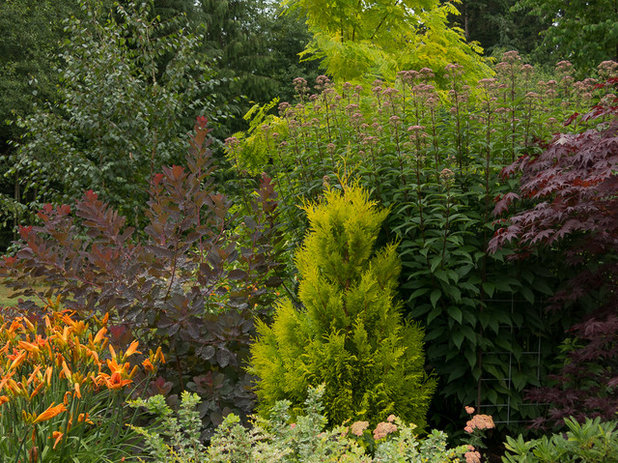
Le jardinet
Evergreen TreesForever Goldie Golden Arborvitae (syn. Forever Goldy western red cedar)
(
Thuja plicata ‘Forever Goldie’)
Forever Goldie is the golden teddy bear of the conifer world that just begs to be hugged. In spring and summer, it moves through shades of chartreuse to gold, while in winter it takes on an orange cast. This outstanding cultivar is one to include no matter how large or small your garden may be.
Origin: This cultivar was discovered in the Netherlands in 2002 as a seedling.
Where it will grow: Hardy to -40 degrees Fahrenheit (USDA zones 3 to 7; find your zone)
Water requirement: Average
Light requirement: Full sun
Mature size: 15 to 20 feet tall and 3 feet wide
Benefits and tolerances: Does not shed; scorch resistant; tolerates a wide range of soil conditions
Seasonal interest: Year-round
When to plant: Spring or fall
Planting notes: Since this was just introduced in 2011, it is not easy to find landscape-size trees. I recommend purchasing a small one and enjoying it in a container for a few years before transplanting it.
The one shown here was
purchased as a 15-inch-tall plant in a 1-gallon pot four years prior to this photograph’s being taken. It is now approximately 4 feet tall.
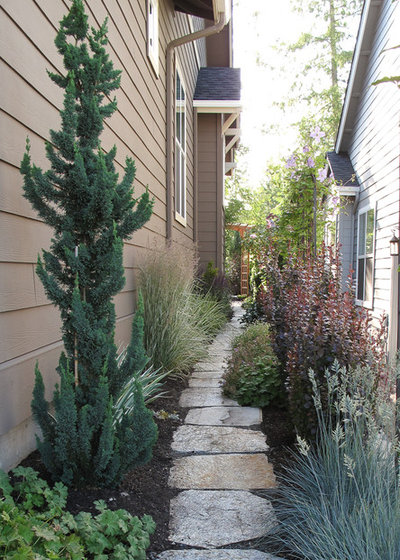
Le jardinet
Wissel’s Saguaro False Cypress (syn. Wissel’s Saguaro Lawson’s cypress, Wissel’s Saguaro Port Orford cedar)
(
Chamaecyparis lawsoniana ‘Wissel’s Saguaro’)
This is a conifer with attitude. With oddly bent branches like the cactus, this stands out from other plants by virtue of its shape as well as its deep blue-green color. This is my go-to conifer for narrow spaces, since it rarely grows wider than 2 feet.
Origin: The species is native to Oregon and California, but this cultivar was developed in the Netherlands.
Where it will grow: Hardy to -10 degrees Fahrenheit (zones 6 to 8)
Water requirement: Average; do not overwater
Light requirement: Full sun or light shade
Mature size: 8 to 10 feet tall and 3 feet wide
Seasonal interest: Year-round
When to plant: Spring or fall
Planting notes: Plant it in well-drained soil.
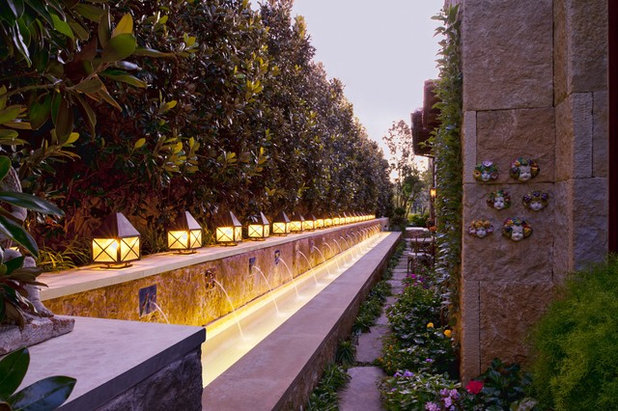
Pool Environments, Inc.
Little Gem Magnolia (
Magnolia grandiflora ‘Little Gem’)
A prince among trees, this dwarf southern magnolia has lustrous dark green leaves that are cinnamon colored underneath, making them very popular in holiday decorations.
Although this is an evergreen tree, it is perhaps most loved for its abundant and fragrant white flowers in spring. Each bloom can be up to 4 inches across, creating a spectacular show. The species is much too large for small gardens, but the dwarf Little Gem is a good option, maturing at 7 to 10 feet wide. If that is still too wide, consider training it as an espalier as you would a camellia.
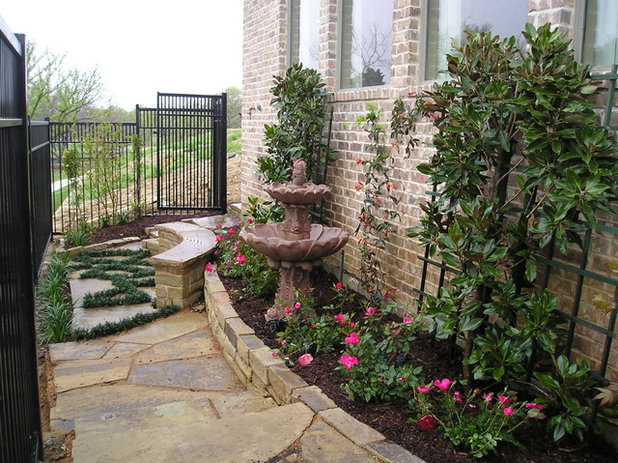
FineLines Design Studio
Origin: The species is native to the southeastern United States; Little Gem is a garden cultivar.
Where it will grow: Hardy to 0 degrees Fahrenheit (zones 7 to 9)
Water requirement: Average
Light requirement: Full sun to light shade
Mature size: 15 to 20 feet tall and 7 to 10 feet wide
Seasonal interest: Year-round
When to plant: Spring or fall
Planting notes: In cooler climates plant it in an area protected from strong winds, preferably against a wall.
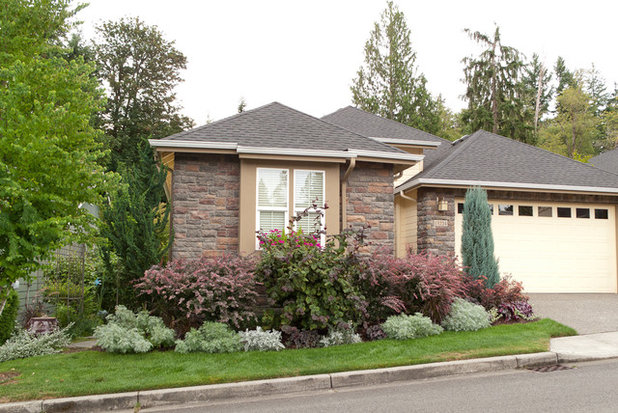
Le jardinet
Blue Surprise Port Orford Cedar (syn. Blue Surprise Lawson’s cypress)
(
Chamaecyparis lawsoniana ‘Blue Surprise’)
The dusky blue of this slender conifer is eye catching and a welcome change from shades of green, but the surprise is that this conifer takes on burgundy highlights in cold weather.
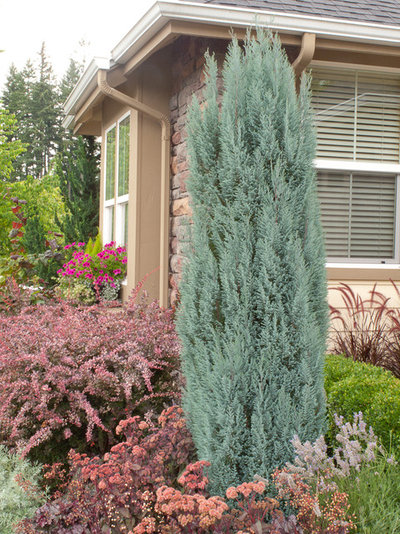
Le jardinet
Origin: Blue Surprise was cultivated in the Netherlands; the species is native to Oregon and California.
Where it will grow: Hardy to -15 degrees Fahrenheit (zones 6 to 9)
Water requirement: Average to low; do not overwater
Light requirement: Full sun or light shade
Mature size: 8 feet tall and 2 to 3 feet wide
Seasonal interest: Year-round
When to plant: Spring or fall
Planting notes: This tree is now available from Monrovia on disease-resistant rootstock.
See a great garden combo that includes this tree
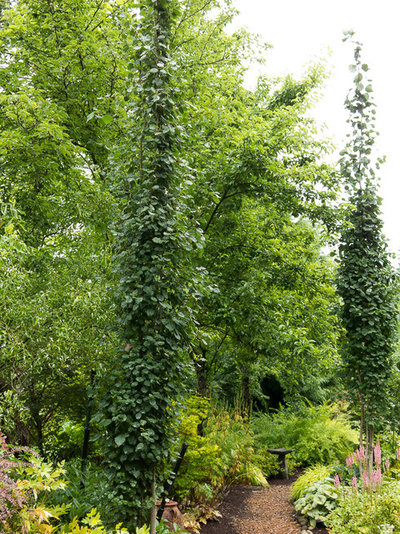
Le jardinet
Deciduous TreesDeciduous trees offer fresh spring growth and oftentimes beautiful fall color; the sound of the wind through the leaves is another asset.
Swedish Aspen (
Populus tremula ‘Erecta’)
I longed to plant a grove of quaking aspens (
Populus tremuloides) alongside a narrow path, knowing that the moist soils would be perfect and it would give me a sense of a woodland without casting too much shade or obstructing the walkway. Sadly, they are prone to disease here in the Pacific Northwest, so I opted for Swedish aspens instead. These grow in clumps and are tightly columnar. The bark is a pale gray rather than white, but these aspens still have rustling leaves to bring music and fall color to the garden. In favorable, very moist soil they will send out runners and spread, so take that into consideration. I have not seen the same spreading in drier soils.
Origin: Northern Europe and Asia
Where it will grow: Hardy to -50 degrees Fahrenheit (zones 2 to 5)
Water requirement: Thrives in moist soils but is also drought tolerant once established
Light requirement: Full sun or light shade
Mature size: 40 feet tall and 10 feet or less wide (although I have never seen them grow wider than 5 feet)
Benefits and tolerances: Tolerates clay and moist soils; attracts butterflies
Seasonal interest: Spring to fall
When to plant: Spring or fall
Planting notes: Water it regularly while it’s becoming established.
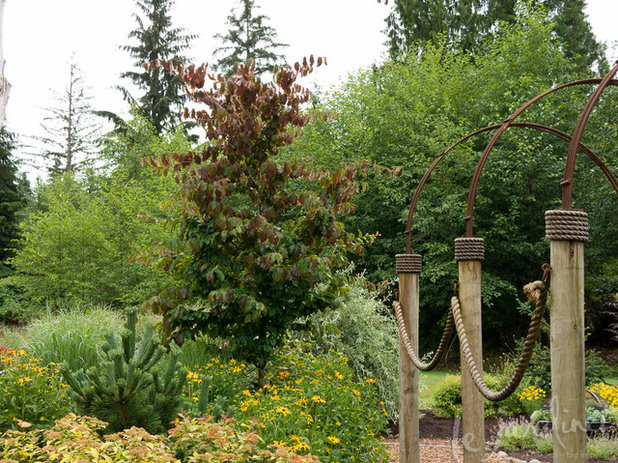
Le jardinet
Ruby Vase Persian Ironwood(
Parrotia persica ‘Ruby Vase’)
When space is limited, I expect a lot from any plant allowed into the garden. Ruby Vase Persian ironwood has become a favorite of mine for its winter flowers, interesting bark and unique foliage, which constantly changes color from spring until fall.
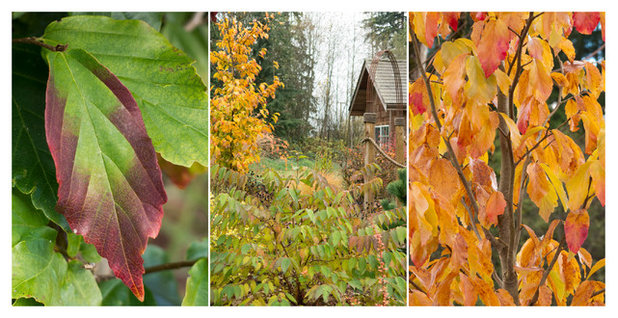
Le jardinet
Origin: The species is from northern Iran.
Where it will grow: Hardy to -20 degrees Fahrenheit (zones 5 to 7)
Water requirement: Average
Light requirement: Full sun or partial shade
Mature size: 30 feet tall and 12 feet wide, but I have not seen any grow this wide
Benefits and tolerances: Low maintenance
Seasonal interest: Year-round
When to plant: Spring or fall
Planting notes: Plant it in moisture-retentive but well-drained soil.
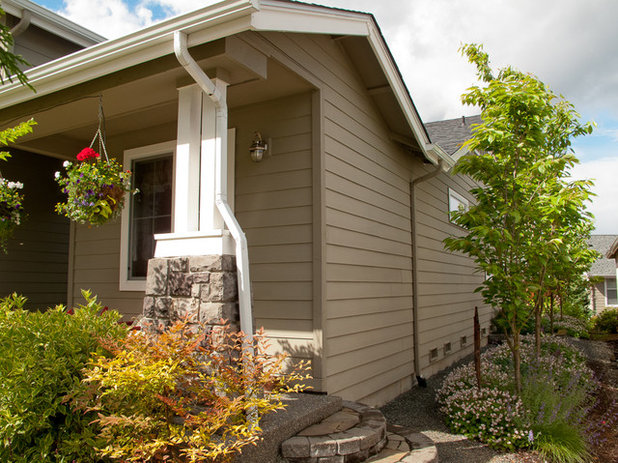
Le jardinet
Amanogowa Japanese Flowering Cherry (
Prunus serrulata ‘Amanogowa’)
Is there anything more romantic in spring than a path lined with fragrant cherry trees, their delicate blossoms fluttering to the ground like confetti? If space is a limiting factor in your garden, you can still enjoy their beauty by selecting Amanagowa, which is much narrower yet has the same charm as its wider cousins.
The foliage emerges bronze-green, matures to a bright green (shown here), then turns to fiery shades of red and gold in fall.
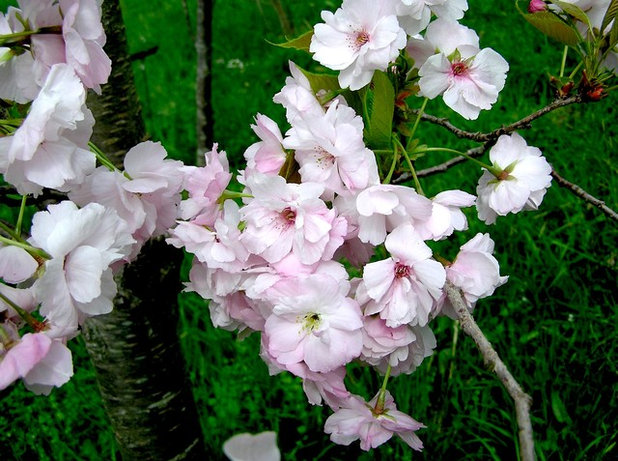 Origin:
Origin: Japan
Where it will grow: Hardy to -20 degrees Fahrenheit (zones 5 to 8)
Water requirement: Average
Light requirement: Full sun or light shade
Mature size: 25 feet tall and 12 feet wide (although I have not seen them greater than 6 feet wide after 10 years)
Benefits and tolerances: Attracts bees
Seasonal interest: Spring to fall
When to plant: Spring or fall
Planting notes: If you live in an area that receives heavy snow in winter, I suggest tying the branches to the main trunk; this will avoid the branches’ being broken and pushed outward
Photo by Paco Garin
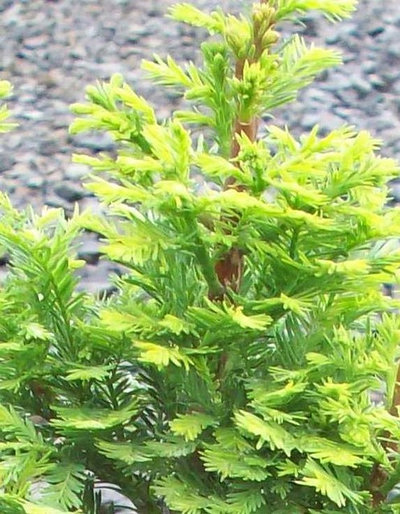
Monrovia
Lindsey’s Skyward Bald Cypress(
Taxodium distichum ‘Skyward’)
The feathery foliage of bald cypress is so delicate, you just want to run your fingers through it. The spring growth is a bright, light green; it matures to midgreen before turning a distinctive copper color in fall. These autumnal tones last for many weeks before the needles are shed.
With its interesting branching structure and attractive bark, this is a conifer that provides year-round interest even without winter foliage.
Origin: The species is native to the southeastern and gulf coastal plains of North America; this cultivar was selected for its natural dwarf habit and nonaggressive tendencies.
Where it will grow: Hardy to -20 degrees Fahrenheit (zones 5 to 9)
Water requirement: Moist to wet soil
Light requirement: Full sun
Mature size: 20 feet tall and 6 feet wide
Benefits and tolerances: Tolerates wet soil; nonaggressive root system; strong disease resistance
Seasonal interest: Year-round
When to plant: Spring or fall
Planting notes: Do not allow the soil to dry out.





